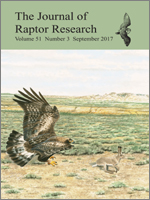Contaminant exposure is among the many threats to Golden Eagle (Aquila chrysaetos) populations throughout North America, particularly lead poisoning and anticoagulant rodenticides (AR). These threats may act in concert with others (e.g., lead poisoning and trauma associated with striking objects) to exacerbate risk. Golden Eagles are skilled hunters but also exploit scavenging opportunities, making them particularly susceptible to contaminant exposure from ingesting tissues of poisoned or shot animals. Lead poisoning has long been recognized as an important source of mortality for Golden Eagles throughout North America. More recently, ARs have been associated with both sublethal and lethal effects in raptor species worldwide. In this review, we examine the current state of knowledge for lead and AR exposure in Golden Eagles, drawing from the broader raptor contaminant ecology literature. We examine lead and AR sources within Golden Eagle habitats, exposure routes and toxicity, effects on individuals and populations, synergistic effects, and data and information needs. Continued research addressing data needs and information gaps will help with Golden Eagle conservation planning.
How to translate text using browser tools
1 September 2017
Characterizing Golden Eagle Risk to Lead and Anticoagulant Rodenticide Exposure: A Review
Garth Herring,
Collin A. Eagles-Smith

Journal of Raptor Research
Vol. 51 • No. 3
September 2017
Vol. 51 • No. 3
September 2017
Aquila chrysaetos
bullet fragments
first generation anticoagulant rodenticide
golden eagle
lead poisoning
second generation anticoagulant rodenticide




